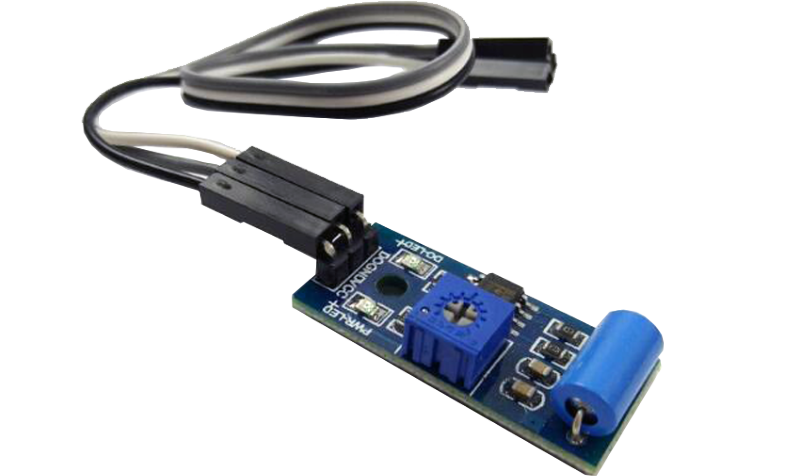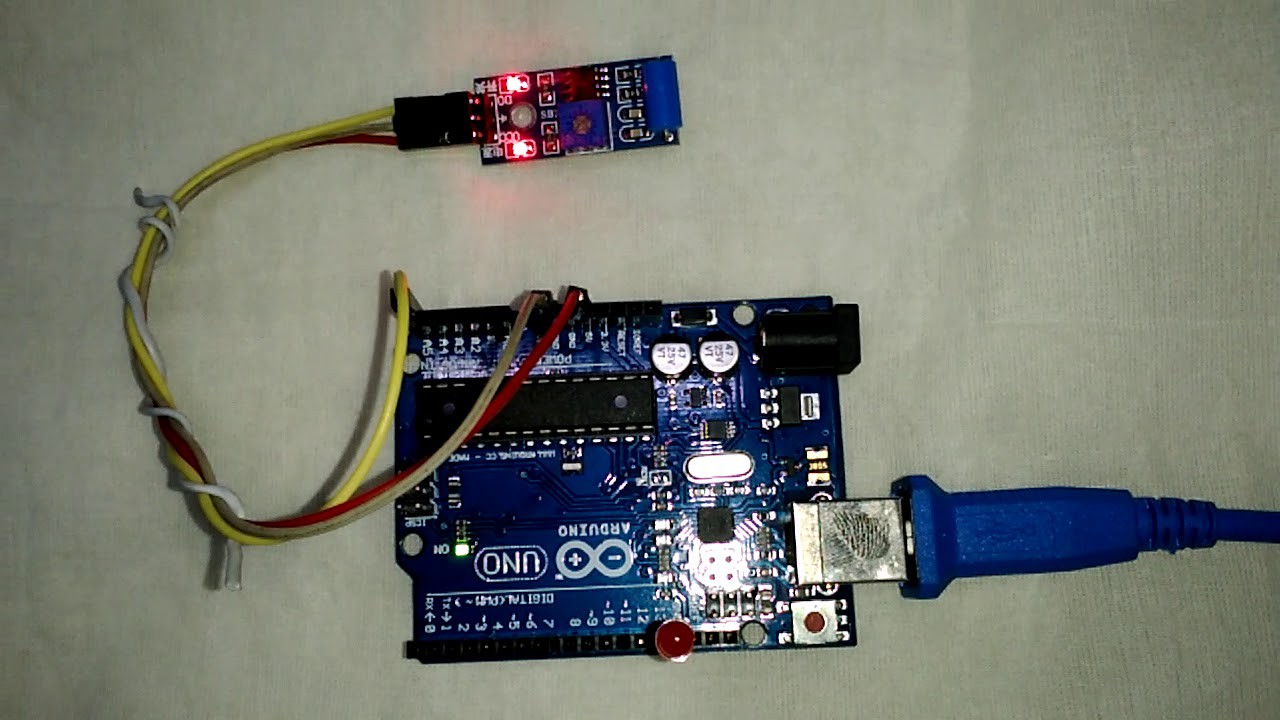About Project
There are several critical machines or expensive types of equipment which undergo damages due to vibrations. In such a case, a vibration sensor is needed to find out whether the machine or equipment is generating vibrations or not.
The vibration sensor module is interfaced with popular Arduino UNO and whenever the vibration sensor recognizes any vibration or jerk an LED will start blinking.
Vibration Sensor Module

This is an SW-420 vibration module, which can work from 3.3V to 5V. The sensor uses the LM393 comparator to recognize the vibration over a threshold point and provide digital data, Logic Low or Logic High, 0 or 1.
There are three surroundings available in the module, two LEDs, one for the Power state and another for the sensor’s output. In this project, we have used 5V to power the module.
The LED is connected to the D13 pin. The Ground and the 5V pin are used to power up the Arduino whereas the A5 pin is utilized to take the data from the vibration sensor.
Schematics

 hIOTron
hIOTron